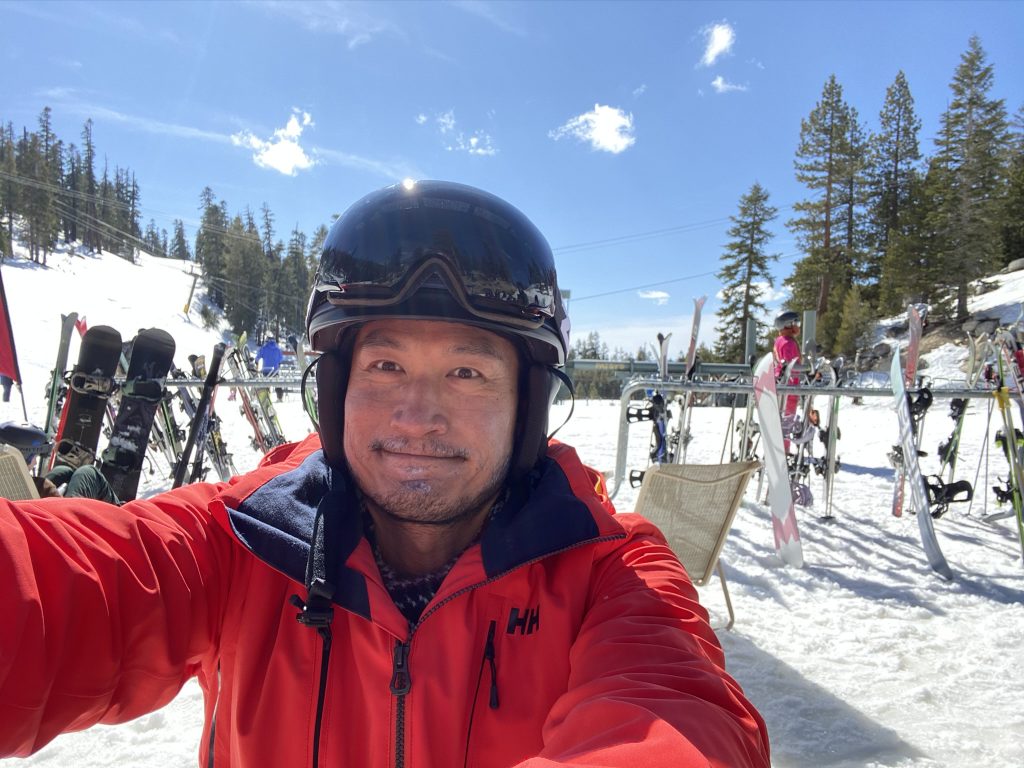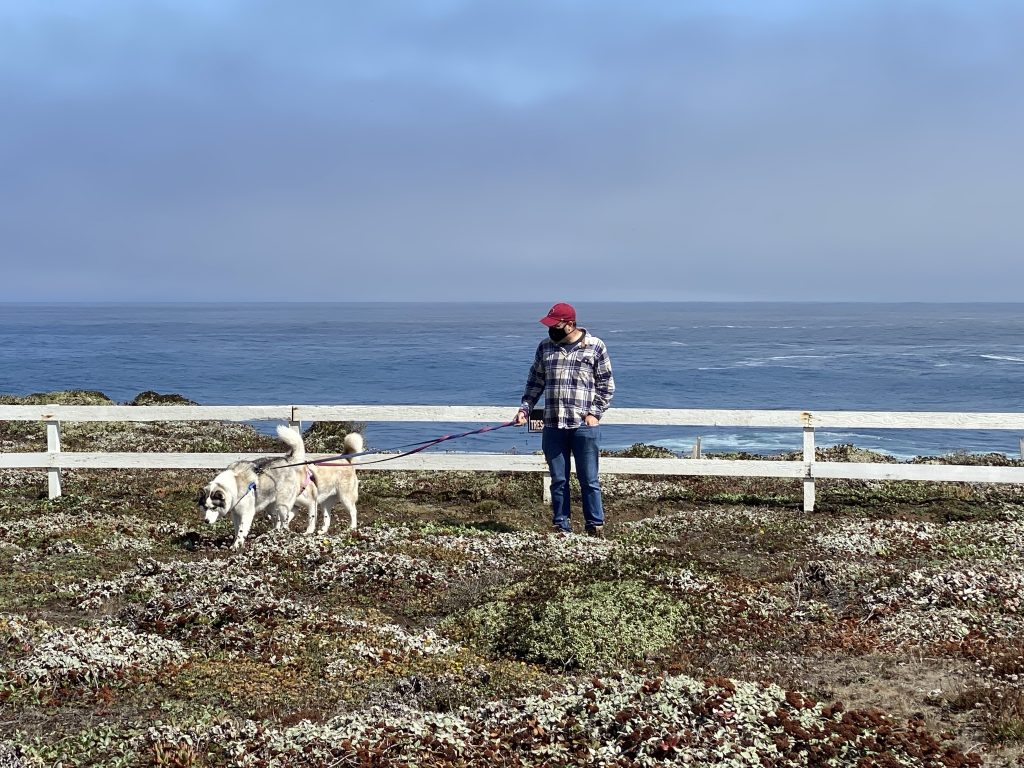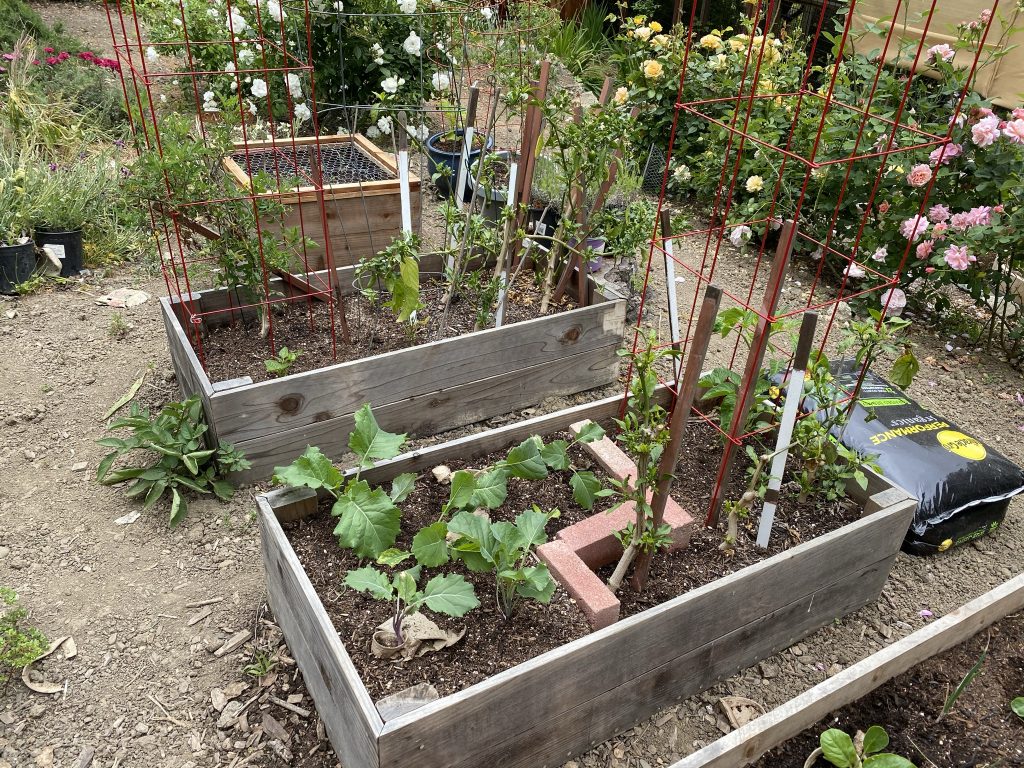5 Questions with Ken
Brian Lefholz
March 29, 2022
Ken brings a worldly perspective to addressing some of the most pressing issues of our time. He has a wonderful ability to take the big picture and apply it in meaningful way to our projects. He is passionate about our planet and improving the diverse communities we all call home.
1. What’s one thing most people don’t know about you?
Most of my coworkers are aware that I am passionate about climate change and creating sustainable living environments. I am originally from Taiwan, a small island nation with a very dense population with limited natural resources. Conservation is an idea that we are taught at a very young age. In addition to recycling and limiting the use of non-biodegradable items such as plastic, my family found ways to reduce waste in other creative ways. I remember my mother even using rice water as an effective cleaning solution instead of dish detergent to limit contaminating ground water with harmful chemicals. I believe we as an architects should lead by example. If we want to slow or even start reversing climate change, the time is now, and the onus is ours.
2. What upcoming technological innovation will dramatically impact the industry in the next five years?
Modular construction has increased in popularity. The AEC industry can benefit from the simplicity in design and the controlled environment of modular construction. For architectural design specifically, machine learning will impact us significantly. Artificial Intelligence improves our efficiency. Data collection services such as Amazon Alexa and Google Home may be a useful tool in aiding the creation of more individualized living spaces. As architects, the challenge will be to integrate this technology to improve design while at the same time understanding its limitations.
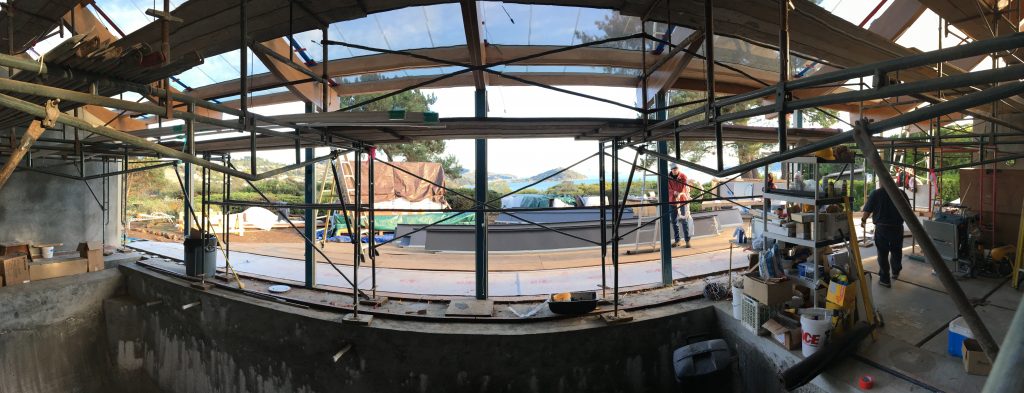
Transparent solar panel roof on a pool house for a single family home in Tiburon, CA that I designed in 2015.
3. What would we most likely find you doing on the weekend?
We live in the Berkeley Hills near Tilden Park, a regional park in East Bay between Alameda County and Contra Costa County. We have two huskies who need a lot of exercise. I spend a lot of time on the weekends exploring the wilderness with them. We feel very lucky to have many hiking trails so close to us.
We also have a good sized backyard by most Berkeley standards. My partner and I make planter boxes and grow our own fruits and vegetables. I never thought I would be an urban farmer, but I have increasingly enjoyed this over the past few years. We are becoming more ambitious with different crops each year. Urban farming also entices me because it’s a sustainable food solution and reduces your carbon footprint.
4. If you could have a beer with anyone, who would it be?
Pete Buttigieg is at the top of my list. I admire him both professionally and personally. As the current Secretary of Transportation, he has been a passionate proponent for building more sustainable ways of travel including high speed rail and promoting the transition to electric vehicles. He has also worked diligently to promote installing a network of EV chargers to help combat climate change. Additionally, he has been a proponent of combating and correcting our long history of infrastructural racism. As part of LGBTQ+ community, I am particularly grateful for his positive representation of a previously marginalized minority.
5. What are you currently involved in public realm outside of the work?
I am currently volunteering with the Engineering Alliance for the Arts. It is a 10-week program to teach architecture and design to high school students. They are currently working on a scale model of a bridge and I have enjoyed this immensely.
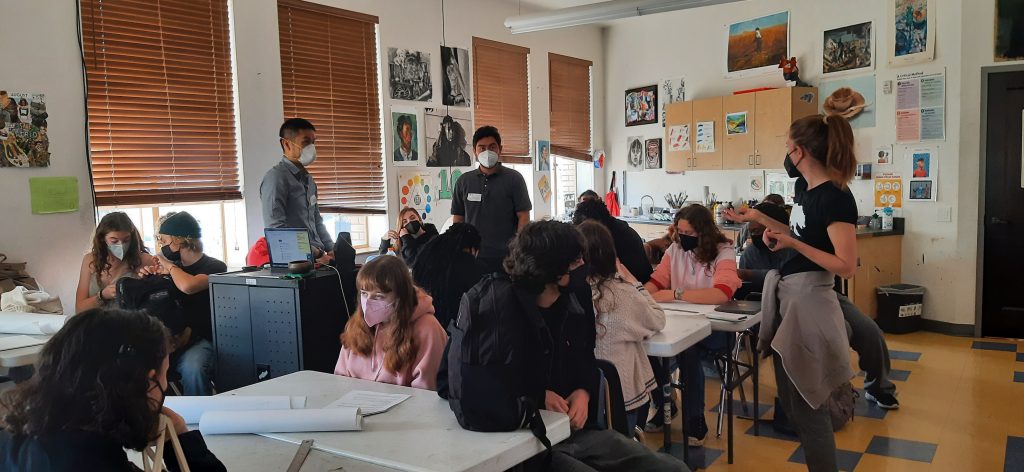
Volunteering (standing on left) to teach high school students with Engineering Alliance for the Arts.
This year I was elected to the board directors of AIA East Bay Chapter. I have enjoyed learning about the operation of a nonprofit organization. We are working to promote a sustainable and more equitable environment through architecture. I am currently facilitating the home tour committee, planning to showcase many excellent designs within our East Bay community.
I also participate in the AIA California EDI committee; a statewide committee that promotes diversification, inclusivity, and equality in the architecture community. Our goal this year is to create a tool kit for our local chapters and architectural firms to adopt EDI practices and to explore ways to increase the diversity of leadership in committees, task forces, and boards.
